
Master the art of 3D design with our 3ds Max Training course, tailored for professionals in animation, architecture, and game development. This course covers essential topics including modeling, materials, lighting, rendering, animation, and scene management. Learners will work on real-world projects to build skills in creating lifelike environments, characters, and simulations. With expert-led sessions and hands-on practice, participants will gain the confidence and proficiency needed to excel in 3D production pipelines using Autodesk 3ds Max.
3DS MAX Training Interview Questions Answers - For Intermediate
1. What is the difference between Bump Mapping and Normal Mapping?
Bump Mapping and Normal Mapping are both techniques used to simulate surface detail without increasing polygon count. Bump Mapping uses grayscale images to fake height variations, whereas Normal Mapping uses RGB images to simulate surface normals, giving a more accurate illusion of depth and lighting. Normal Maps are generally more effective, especially when viewed from different angles, making them preferred for games and real-time rendering.
2. What is the role of the Render Setup dialog box in 3ds Max?
The Render Setup dialog box is a central panel that controls how scenes are rendered. It allows users to define output size, file format, rendering engine, frame ranges for animations, sampling settings, and more. It also provides access to environment and effects controls, making it essential for configuring high-quality stills or animations.
3. How can you create a camera in 3ds Max and what are its uses?
A camera can be created from the Create Panel under the Cameras category. There are two main types: Target and Free. Cameras help simulate real-world perspectives and can be animated to create dynamic walkthroughs or cinematic sequences. They are also essential for rendering scenes from specific viewpoints.
4. What is the use of the 'Attach' function in Editable Poly?
The 'Attach' function in Editable Poly allows the user to combine multiple objects into a single editable object. This is useful for grouping geometry for easier manipulation, applying modifiers uniformly, or preparing for Boolean operations. However, attached objects must share the same material or UVs may need to be adjusted post-attachment.
5. How does the Skin Modifier work in character rigging?
The Skin Modifier is used to bind a mesh to a skeleton (bones or biped), allowing it to deform during animation. It enables precise control over how each vertex responds to bone movement through weight painting or envelope adjustments. It is a critical step in character animation to ensure natural-looking deformations.
6. What is Global Illumination (GI) and how is it applied in 3ds Max?
Global Illumination simulates the way light bounces off surfaces and indirectly lights other areas in a scene. In 3ds Max, GI can be activated using render engines like Arnold or V-Ray. It enhances realism by illuminating areas that are not directly lit by a light source, producing softer shadows and natural ambient lighting.
7. What are Particle Systems and where are they used?
Particle Systems in 3ds Max are used to simulate effects involving numerous small objects, like smoke, fire, rain, or sparks. Tools like Particle Flow or the legacy Super Spray provide control over emission, speed, gravity, collisions, and life span. They are commonly used in VFX and simulations for dynamic environments.
8. What is the purpose of using layers in 3ds Max?
Layers in 3ds Max allow users to organize their scene by grouping objects logically. This helps manage complex scenes by controlling visibility, selection, and rendering of grouped elements. Layers improve workflow efficiency, especially when working in teams or on large architectural or mechanical projects.
9. How can you animate a camera along a path in 3ds Max?
To animate a camera along a path, a spline is first created and then used with the Path Constraint controller. The camera or its target is assigned to follow this path, and the percentage along the path can be animated. This method is useful for fly-throughs, product reveals, and smooth cinematic movements.
10. What are Booleans and how are they used in modeling?
Boolean operations are used to combine, subtract, or intersect two or more mesh objects. In 3ds Max, Boolean modifiers are applied to perform operations like union, difference, or intersection. They are especially useful in architectural modeling and mechanical design but can sometimes create messy topology that needs cleanup.
11. What is the difference between Static and Animated textures in 3ds Max?
Static textures remain unchanged throughout the animation, while animated textures change over time. Animated textures can be achieved by using bitmap sequences, procedural maps with animated parameters, or by keyframing material properties. This is useful for effects like flickering lights, moving water, or animated signage.
12. How can you reduce flickering in an animation render?
Flickering in animations is often caused by inconsistent Global Illumination or sampling settings. To reduce flicker, users should increase sample rates, use stable GI settings like irradiance caching or brute force, and enable temporal sampling if available. Consistency between frames is key to achieving smooth output.
13. What is the difference between viewport and render output?
The viewport shows a real-time approximation of the scene, optimized for interactivity. Render output, on the other hand, is the final high-quality image generated using all render settings, materials, and lighting calculations. Discrepancies can occur, especially when using advanced shaders or effects not supported in the viewport.
14. What is Ambient Occlusion and how is it used?
Ambient Occlusion (AO) is a shading method used to simulate soft shadows in crevices and where surfaces meet. In 3ds Max, AO can be applied through a dedicated shader or baked into textures. It enhances realism by adding depth and grounding objects in the scene, especially in architectural visualization and product design.
15. What is the use of the Material IDs and Multi/Sub-Object Material in 3ds Max?
Material IDs are numerical tags assigned to different faces or elements of a model. The Multi/Sub-Object material allows assigning different materials to different IDs within a single object. This is especially useful for complex models like cars or furniture, where various parts need distinct textures or finishes.
3DS MAX Training Interview Questions Answers - For Advanced
1. How do you implement a non-destructive workflow in 3ds Max and why is it important?
A non-destructive workflow in 3ds Max involves using tools and techniques that allow edits without permanently altering the original geometry or data. This is achieved by leveraging modifiers (like Bend, Taper, Shell), instancing objects, using layers for visibility control, and employing procedural textures and parametric objects. For example, instead of collapsing the modifier stack after every step, it’s best to retain it so adjustments can be made later. This approach increases flexibility, facilitates client revisions, and reduces the need to start over when changes arise. Additionally, using instanced copies rather than unique ones helps maintain editability across similar objects. Scene states, XRefs, and procedural shaders are also key components. A non-destructive workflow promotes efficiency, especially in collaborative pipelines or iterative design environments where feedback and versioning are common.
2. What is TyFlow, and how does it enhance the capabilities of 3ds Max beyond Particle Flow?
TyFlow is a next-generation particle simulation plugin for 3ds Max that greatly extends the functionality of the legacy Particle Flow system. It allows for complex simulations including cloth, fluid, rigid bodies, destruction, growth algorithms, and crowd behaviors—all within a node-based workflow. Unlike Particle Flow, which can be limited in terms of performance and versatility, TyFlow is multi-threaded and GPU-accelerated, offering significantly better performance and scalability. It supports birth operators, forces, collisions, custom properties, scripting, and integration with V-Ray, Phoenix FD, and more. Artists use TyFlow for advanced VFX such as explosions, collapsing buildings, sand simulations, procedural animations, and even character crowd systems. Its ability to combine physics-based simulations with artistic control makes it a vital tool in high-end production.
3. How does Arnold handle subdivision surfaces during rendering in 3ds Max, and what settings affect its performance?
Arnold handles subdivision surfaces in 3ds Max using Catmull-Clark algorithms, allowing low-resolution meshes to be smoothed at render time. This is controlled through the Arnold Properties modifier or material settings, where subdivision type, iterations, and adaptive settings can be specified. Adaptive subdivision allows Arnold to increase resolution only where needed—such as near camera or sharp curvature—thereby optimizing memory and render time. Additionally, users can apply creases and edge weights that affect how subdivision is calculated. For performance, settings like “Max Subdiv Iterations” and “Error Threshold” need to be fine-tuned depending on scene complexity and required fidelity. Proper use of these controls enables high-quality results while keeping RAM and render time manageable.
4. Explain the role of Alembic (.abc) files in 3ds Max and their use in production pipelines.
Alembic files are an efficient way of transferring baked geometry animations and simulations between 3D applications. In 3ds Max, Alembic (.abc) files preserve vertex-level animation, transformations, and topology changes, making them ideal for bringing in simulations from Houdini or Maya or exporting assets to game engines. Unlike FBX, Alembic is not focused on bones or rigs but rather on geometry and caches. This format is particularly useful in VFX pipelines where assets are simulated in one software and rendered in another. Alembic files reduce the dependency on rigs or modifiers during rendering, improve playback performance in heavy scenes, and offer frame-by-frame reliability due to being non-procedural.
5. How do you implement custom render passes in 3ds Max using Render Elements, and why are they important for compositing?
Custom render passes (render elements) in 3ds Max allow the separation of different aspects of a render—like diffuse, reflection, refraction, lighting, shadows, Z-depth, and ambient occlusion—into individual layers. This enables fine-tuning during compositing without re-rendering the entire scene. Users can add elements via the Render Setup dialog under the “Render Elements” tab and choose from predefined passes or create custom ones using render masks or matte objects. Advanced pipelines often include Cryptomatte passes for object ID masking in compositing tools like Nuke or After Effects. These passes help achieve artistic control, correct errors, and adjust visual elements such as highlights, colors, or shadows, post-render, which is especially important for high-end VFX and film projects.
6. What are Arnold Procedurals (Stand-ins) and how do they benefit rendering in complex scenes?
Arnold Procedurals, also known as Stand-ins (.ass files), are pre-exported geometry or instances saved from heavy scenes to be loaded only at render time. In 3ds Max, they significantly reduce scene load time, viewport lag, and memory usage. Rather than storing complex geometry in the main scene, it’s offloaded to external files and referenced when rendering. This is especially useful in environments with heavy assets like foliage, architecture, or crowd simulations. Stand-ins retain shader and animation data and can be instanced or transformed within scenes. They’re highly scalable and allow studios to manage render scenes modularly across multiple shots or projects.
7. What are the common causes of flickering in Global Illumination (GI) during animation, and how can they be mitigated?
Flickering in GI animation renders is often caused by temporal inconsistency in sampling, light cache, or irradiance maps. It typically occurs when indirect lighting calculations differ slightly between frames. To mitigate this, one can use brute-force GI instead of interpolated solutions or precompute GI maps and reuse them across frames. In render engines like V-Ray, using “Light Cache (Prepass)” and “Irradiance Map (Multiframe Incremental)” reduces flicker. Arnold avoids this issue with brute-force lighting but may increase render times. Increasing GI sample count, avoiding overlapping geometry, and reducing noise thresholds can also help stabilize lighting across frames. Consistent lighting and camera movement are key to achieving flicker-free animation.
8. What is baking in 3ds Max and when is it used?
Baking refers to the process of pre-calculating data like lighting, textures, or simulations into fixed data formats such as texture maps or animation keys. In 3ds Max, baking is commonly used for lightmaps in games, procedural animation into keyframes, or converting dynamics into geometry. For example, when exporting to game engines like Unity or Unreal, baked lighting (lightmaps) improves performance by avoiding real-time GI computation. Baking vertex animation or cloth simulations ensures that complex procedural effects behave consistently in render or game pipelines. Tools like “Render to Texture” or “Point Cache” allow artists to bake and export essential data while minimizing real-time computation.
9. How do you manage lighting and exposure in physically based rendering workflows using Arnold or V-Ray in 3ds Max?
In physically based rendering (PBR) workflows, managing lighting and exposure is critical for realism. This involves using physically accurate lights with real-world intensity units (candela, lumens, etc.), combined with proper camera exposure settings like shutter speed, ISO, and aperture. Arnold and V-Ray both support photographic exposure through physical camera controls. The use of HDRI maps in dome lights provides realistic ambient lighting and reflections. Exposure is balanced through tone mapping, with options like Reinhard or Filmic curves to preserve highlights and shadows. Linear workflow with correct gamma settings (typically linear 1.0 for calculations and sRGB for display) ensures consistency across lighting and textures. Render previews and LUTs help visualize the final output within the frame buffer before post-processing.
10. What is the purpose of scripting controllers in 3ds Max, and how are they different from standard controllers?
Scripting controllers in 3ds Max allow the creation of custom behaviors or constraints using expressions or MAXScript. While standard controllers provide predefined behaviors (e.g., Bezier, Euler, Position XYZ), scripting controllers offer logic-driven control for animation properties. For example, a script controller could be used to automate wheel rotation based on distance traveled or to create dependencies between sliders and object transformations. These controllers are assigned via the Motion Panel and can drive any animatable parameter. They are essential for developing rig systems, automation tools, or interactive setups where standard animation keys or constraints are insufficient.
11. What are some challenges faced in using displacement maps, and how are they resolved in rendering pipelines?
Displacement maps add geometric detail at render time by modifying surface geometry based on grayscale values. Challenges include increased memory usage, long render times, and potential mesh tearing or artifacts if settings are not properly managed. In 3ds Max, displacement is usually applied via material settings or modifiers, and controlled through subdivision levels and displacement bounds. Renderers like Arnold use adaptive subdivision to mitigate performance issues. Ensuring displacement maps are high resolution, tileable, and 16-bit or higher reduces banding and artifacts. Pre-visualizing the displacement using render previews and maintaining proper UV mapping helps achieve clean results. When real-time performance is needed, bump or normal maps are used as substitutes.
12. How do you perform a camera match or camera tracking in 3ds Max for integrating 3D elements into live footage?
Camera matching in 3ds Max involves aligning a 3D camera to match the perspective of a background image or video. This is commonly used in VFX to integrate 3D assets into live-action footage. The “Camera Match” utility allows users to input 2D point data from reference images, matching them to 3D reference points. Alternatively, for video, camera tracking software like Autodesk MatchMover or After Effects (with export plugins) is used to generate camera animation data, which is then imported into 3ds Max. The resulting camera replicates the real-world movement, allowing 3D elements to be composited seamlessly into the footage. Attention to lens distortion, scale, and lighting ensures the integration looks realistic.
13. What are some advanced techniques for architectural visualization in 3ds Max using photorealistic rendering?
Advanced architectural visualization in 3ds Max involves using physically based materials, realistic lighting setups, and high-dynamic-range imaging (HDRI). Techniques include importing accurate CAD or Revit models, applying displacement for brick or stone surfaces, using Forest Pack for vegetation scattering, and RailClone for modular components. Render engines like V-Ray or Corona offer features like light mix, adaptive dome lighting, and denoising, enabling faster and cleaner outputs. Cameras are set up with real-world lens parameters, and depth of field is used for realism. Post-processing in tools like Photoshop or Fusion enhances results with bloom, chromatic aberration, and LUT-based color grading.
14. What is the role of the Scene Explorer in complex projects, and how can it be customized for better productivity?
The Scene Explorer in 3ds Max is a powerful scene management tool that displays objects hierarchically or by layers, enabling users to search, sort, group, and filter elements quickly. It becomes essential in large projects where hundreds or thousands of objects must be managed efficiently. Users can customize columns to show object type, layer, material, modifiers, visibility, and other attributes. Filters can isolate cameras, lights, or geometry, and right-click options enable mass-editing of properties. The Scene Explorer supports renaming, parenting, grouping, and selection sets, all of which improve productivity and scene cleanliness, especially in collaborative environments.
15. How do you set up a real-time rendering workflow between 3ds Max and game engines like Unreal Engine or Unity?
To establish a real-time workflow, models and materials from 3ds Max must be optimized for performance and compatibility. Using the Datasmith plugin, assets can be exported to Unreal Engine with minimal setup, including geometry, materials, and lights. For Unity, FBX export with baked normals, proper naming conventions, and game-optimized materials is essential. In both cases, UV mapping must be clean and non-overlapping for lightmapping. Textures should follow PBR standards, with consistent naming and tiling logic. Level of Detail (LOD) models, collision meshes, and optimized shaders are necessary for performance. Real-time rendering benefits from efficient poly counts, instancing, and GPU-friendly materials. Scene updates are streamlined using live link plugins or automated pipelines.
Course Schedule
| Dec, 2025 | Weekdays | Mon-Fri | Enquire Now |
| Weekend | Sat-Sun | Enquire Now | |
| Jan, 2026 | Weekdays | Mon-Fri | Enquire Now |
| Weekend | Sat-Sun | Enquire Now |
Related Courses
Related Articles
- SmartPlants Intools Training – Upgrade Your Technical Skills
- AWS DevOps: The Ultimate Solution for Continuous Delivery Success
- Security and Compliance with IBM Websphere Transformation Extender - Essentials
- Unlocking Efficiency: The Top Benefits of Workday SCM
- SAP BRIM Online Course: A Course Overview
Related Interview
- ISO 45001 Lead Implementer Training Interview Questions Answers
- Administering Microsoft SQL Server 2022 Interview Questions Answers
- HMI, Drives and Networking Training Interview Questions Answers
- GCP-Google Cloud Certified Professional Cloud Architect Interview Questions Answers
- Synchro 4D Training Interview Questions Answers
Related FAQ's
- Instructor-led Live Online Interactive Training
- Project Based Customized Learning
- Fast Track Training Program
- Self-paced learning
- In one-on-one training, you have the flexibility to choose the days, timings, and duration according to your preferences.
- We create a personalized training calendar based on your chosen schedule.
- Complete Live Online Interactive Training of the Course
- After Training Recorded Videos
- Session-wise Learning Material and notes for lifetime
- Practical & Assignments exercises
- Global Course Completion Certificate
- 24x7 after Training Support


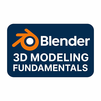

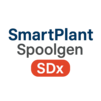
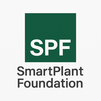
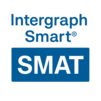


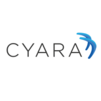




 Join our Live Instructor-Led online classes delivered by industry experts
Join our Live Instructor-Led online classes delivered by industry experts